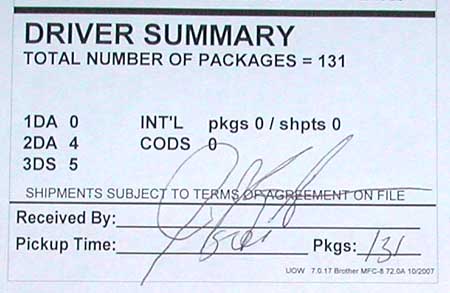The average ecommerce / catalog packer can pack about 22 – 25 boxes an hour, depending on the level of automation. Of course, we don’t have anything like traditional mail order automation in the Lab Store; just a computer, a printer and my wife Barb as Chief Packer & Chief Customer Officer. I pitch in by assembling products and generally keeping the “warehouse” shelves stocked so the Chief can do her thing with the packages and customers.
For a variety of reasons we got a late start today packing the orders from over the weekend and New Year’s Eve / Day, and had to invoke a “Panic Pack” on these 131 orders. A Panic Pack is a high speed affair where Barb picks all the orders but leaves some for me to pack (I suck at packing compared with her) while she packs the others. We packed all 131 orders in 4 hours, just barely in time for UPS pickup.

That might not sound like a big deal versus the 25 boxes an hour, but remember we are also picking the orders and dealing with all the customer service – can you add this to my order, can you change my shipping method, etc. Most packers simply pack an order that has already been picked for them, and don’t do any customer service.

My point with this post is not that we know how to pack like banshees, but the enabling technology behind this capability.
It would have been impossible to pack and manage the service with this many orders in such a short time without a proper backend order management system – something I see many ecommerce folks go without. Most web-based cart back-ends are incredibly difficult to deal with, especially on order changes.
In many web-based order processing systems, it can take multiple steps to make simple changes rather than just a few clicks – add another product to an order, run another credit card charge, reprint the packing slips, etc. This is because once an order is processed, it’s not meant to be changed; order changes were not taken into account when these systems were designed. Nobody talked to customer service to get specs, I guess…
“You mean customers might want to change an order they already placed? Why?” ‘Cause most of them are not geeks. They make mistakes. They forget stuff.
Often, when you call companies using these systems to add products to your order, they tell you “we can’t” and to go online and place another order. Nice. Great service.
We actually don’t mind if customers want to add to orders they have already placed with us – silly, huh? Gee, you want to spend more money with us? Sure, bring it on! By the way, Flat Rate shipping encourages this behavior.
If you have a good backend system, you can just add the product and the software does the rest, because the order has not been “processed” yet as it has with web-based systems – you process the order right before you print the packing slips, including the credit card capture. And, you can do all kinds of customization on the packing slip, like messaging for new customers, repeat customers, and so forth, and automatically interface with the shipping manifest system.
The labor cost savings alone when using these order management systems is huge. When we moved from web-based “copy & paste” order management to local software, our time spent per order on customer service dropped by 50%. This kind of gain in productivity is common, as you can see here.
And when you have more time to service each customer, you can provide better, more customized service. Simple as that.
Plus, our backend system creates one heck of a customer database, automatically consolidating orders at the customer level and providing one-click access to customer service history, cumulative sales, and so forth. Whenever we are faced with a complex service issue, the first thing we do is look at the cumulative sales of the customer, and then we act accordingly. In other words, for proven good customers, we bend the rules. That’s how you build loyalty.
So you need a customer database to provide great service. As far as Marketing goes, you need a customer database to measure the success of customer-centric programs like this one and this one.
If you don’t have a flexible and marketing friendly order management system, you really should consider getting one. We use Stone Edge.